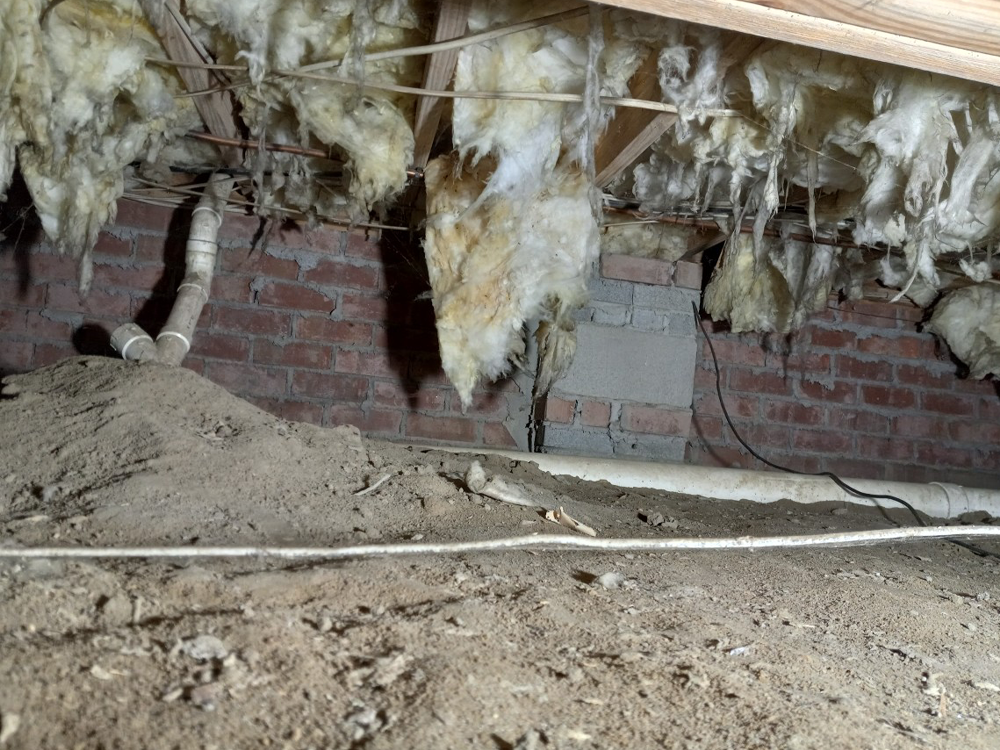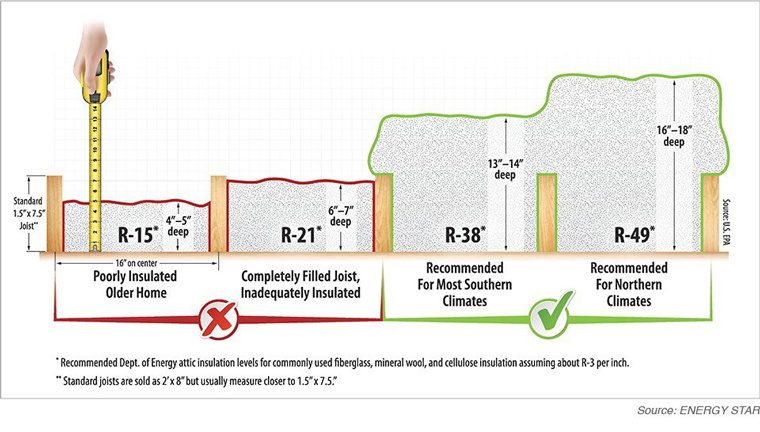How Long Does Attic and Floor Insulation Last?
As much as we’d like for our homes to last forever, the reality is that everything from your roof to your floors have a lifespan. Your floor and attic insulation are no exception – although you’ll probably be pleasantly surprised to learn just how long they can last under ideal conditions!
This article will discuss how long different types of insulation last, how much insulation is the right amount, and common reasons that insulation needs to be replaced. If your energy bills seem too high, get your insulation assessed to see if replacing your existing insulation or adding more insulation is a good investment for you!
Just How Long Does Attic Insulation Last?
A quick search online will show you that most insulation lasts 10-15 years. But what happens after a decade and a half? Does your insulation suddenly stop insulating?
The truth is that most of the websites saying that insulation only lasts 15 years are insulation contractors, and they have an undeniable conflict of interest! At Dragon Vapor Barriers and Insulation we’d rather give it to you straight and let you make decisions that are right for you and your family.
Common insulations like fiberglass insulation, cellulose insulation, spray foam insulation, and mineral wool insulation (AKA rock wool) will last 80 to 100+ years or as long as they remain dry and free from pests.

The Real Exception: Crawl Space Batt Insulation
While attic insulation will last just about forever, crawl space insulation lives a tougher life and often needs replacing around 10-15 years after installation. There are two reasons for this: gravity and moisture.
Unlike the blown-in insulation which is commonly found in attics, crawl space insulation generally comes in the form of fiberglass batts which are stapled or hung between floor joists. Over time the fasteners can release their hold or the paper backing on the batts can tear and fail.
In addition to having to remain suspended for years on end, crawl space insulation is subjected to higher humidity levels. This can be particularly problematic in regions like the South Carolina Midlands where we receive ample rainfall and have nearly perpetually damp soil sitting beneath our homes.
If left unchecked, high crawl space humidity can lead to mold growth in your insulation. Mold spores are a serious health risk and in cases like these we recommend complete insulation removal and replacement.
Crawl space humidity can be controlled with a vapor barrier – but even with a vapor barrier in place, suspended batt insulation simply doesn’t last as long as blown-in insulation.

How thick should attic insulation be?
The proper insulation thickness for your attic depends on where your home is located. Here in South Carolina it is recommended that attics be insulated to R-38 or higher.
What is an R-Value, you ask? An R-Value is a measure of the insulating capacity of a certain thickness of a particular material, with higher R-Values corresponding to more insulation. R-Values allow us to compare the insulating properties of different materials.
Fiberglass and cellulose have very similar R-Values, with 1” of blown-in loose-fill fiberglass insulation providing R-3.1 compared to cellulose’s R-3.5. For a homeowner this won’t make any difference as the final R-Value will be based on the depth of the insulation rather than the material itself. To achieve R-38 you could use 13.5” of fiberglass or 11” of cellulose – a trivial difference in an attic!
What can compromise my insulation’s lifespan?
The two biggest enemies of insulation are water damage and pest infestations.
Water intrusion can happen in many different ways – roof leaks, burst pipes, or even dripping condensation from your HVAC – but the end result is mold and mildew. Once mold has begun to grow, your attic insulation needs to be replaced. Moldy insulation will continue to provide insulation, but household mold spores have been shown to cause severe health problems.
Pests, particularly rats, squirrels, mice, and bats are also bad news for insulation. Again, it isn’t so much that these critters will damage your insulation so badly that it won’t keep your house warm – but the health risks that are associated with the infestation. From hantavirus to murine typhus, pest infestations put your family at serious risk.
Even once the pests are eliminated, your insulation still needs to be removed as there is no effective way to get rid of the droppings they leave behind.
How do I know if my attic needs new insulation?
There are a few scenarios where you’ll need to install new insulation:
- Water damage
- Pest infestation
- You have asbestos insulation
Outside of these three situations, typically your attic will not need the existing insulation removed.
Can new insulation be installed over old insulation?
If you live in an older home, there is a high chance that your attic is under-insulated! The good news is that you can typically cut your energy costs by installing new insulation on top of your existing insulation material.
There are exceptions to this – particularly in cases where your attic floor can’t bear the weight of additional insulation. Your insulation contractor will be able to tell you if you can safely add more insulation.
Conclusion
The great news about insulation is that it can provide decades of service. This means that most insulation installations will be able to pay for themselves well before the end of their life. Just remember that to get the most out of your insulation it is imperative to keep it dry and prevent pest infestations!
If you feel like your energy bills are too high or just would like to boost your home’s energy efficiency, adding insulation to your attic is a great way to enjoy long-term energy savings.

